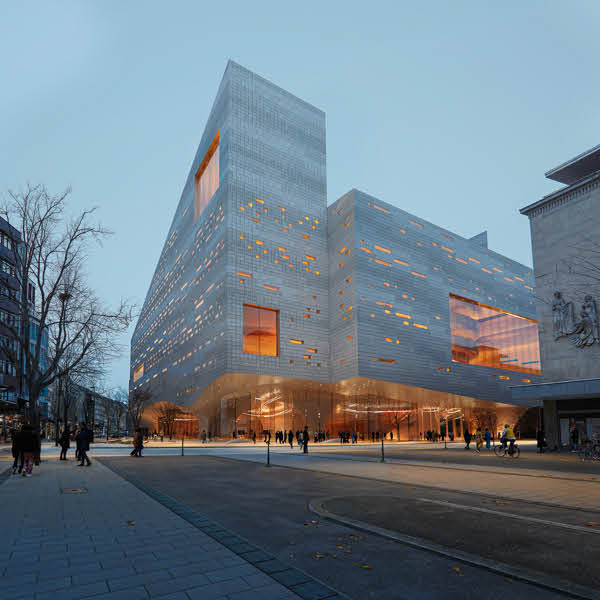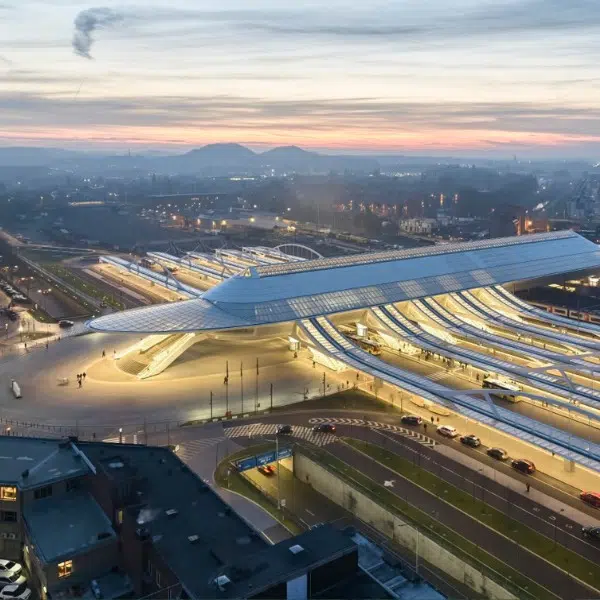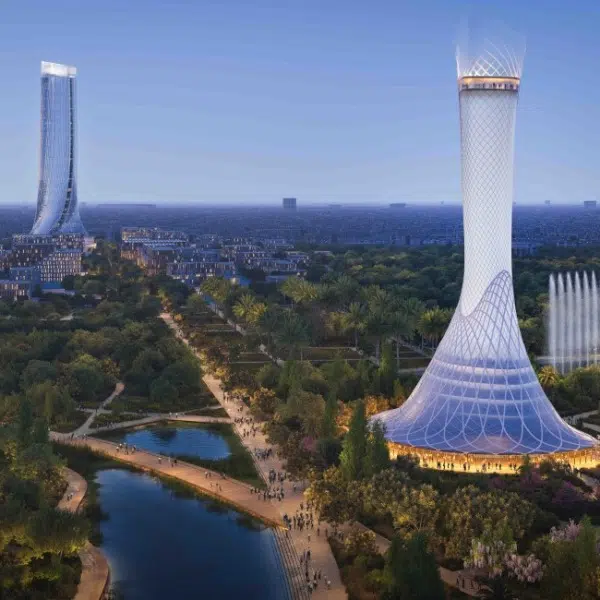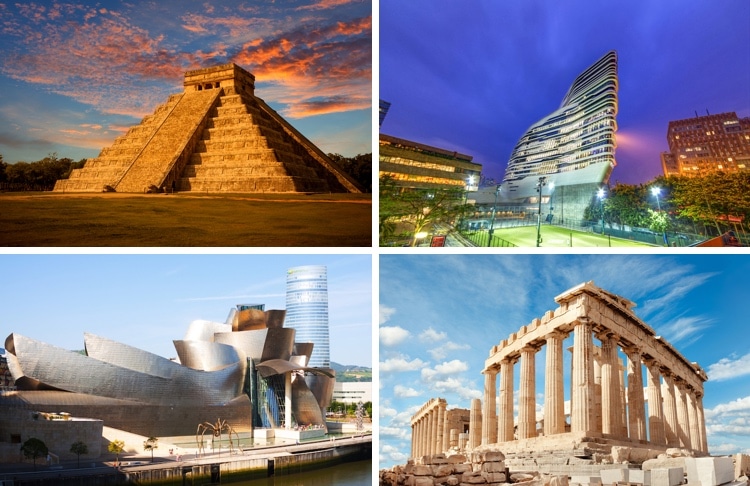
Throughout history, architecture has been used as a creative, functional outlet that often heralds the cultural depth of society. In fact, a scroll through the basics of important architectural movements is a window into art and culture during any given time period.
Often, architectural styles build on one another, with each past period providing the building blocks of advancement for the next culture. Just think of the lasting influence of the Egyptian pyramids or classical Greek temples, which have not only inspired later architects, but also fashion, jewelry, and industrial design.
This architecture 101 timeline of major Western types of architecture will give you a crash course in the development of design and construction. By no means comprehensive, the architectural styles included have proven to be benchmarks in society, leaving a lasting legacy that continues today.
Ancient Egyptian Architecture

Giza pyramid complex. El Giza, Egypt. (Photo: WitR / Shutterstock)
One of the most powerful civilizations in history, it only makes sense that the Egyptians would produce iconic architecture. And while the pyramids might be the structures that come to mind when thinking of Egyptian architecture, they are not to the only type of architectural expression the Egyptians built. Prior to the pyramids, Egyptians focused on incredibly detailed temple complexes that focused on aesthetic beauty and function.
By combining incredible engineering prowess with rich symbolism, the architecture of the Egyptians would continue to be a model for centuries to come. Both ancient Greek and Roman architecture borrowed characteristics, such as stylized column motifs in early Greece and the proliferation of obelisks in Rome.
Timeline: 3,050 BC to 900 BC
Signature building: Pyramid complex of Giza

Temple of Horus. Edfu, Egypt. (Photo: Graficam Ahmed Saeed / Shutterstock)
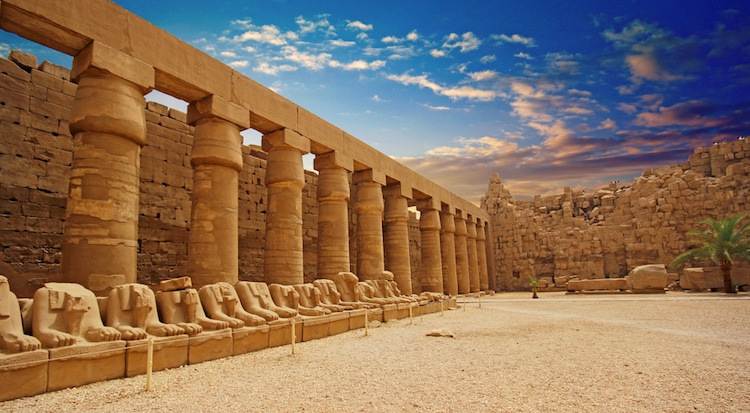
Temple of Karnak. Luxor, Egypt. (Photo: Zbigniew Guzowski)
Greek and Roman Architecture

Parthenon. Athens, Greece. (Photo: anyaivanova / Shutterstock)
Often grouped together under the umbrella of classical architecture, ancient Greek and Roman architecture solidified the idea of building structures against a set template. The Greek order of columns—Doric, Ionic, and Corinthian—is still used today, and Roman scholar Vitruvius’ multi-volume work De architectura, discussed how rules of proportion in architecture can bring about harmony. From the Acropolis complex in Athens to the Colosseum and Pantheon in Rome, some of history’s most iconic buildings come from the Greeks and Romans.
These civilizations were also masters of engineering, with the Romans building incredible highway systems and aqueducts to bring commercial goods and water across their vast lands, which stretched the entirety of Europe.
Timeline: 850 BC to 476 AD
Signature building: Parthenon
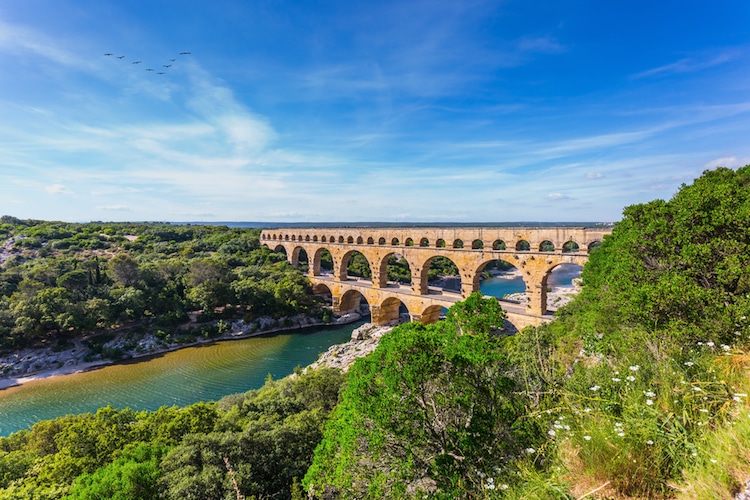
Pont du Gard. Vers-Pont-du-Gard, France. (Photo: kavram / Shutterstock)

Pantheon. Rome, Italy. (Photo: Viroj Phetchkhum / Shutterstock)
Byzantine Architecture
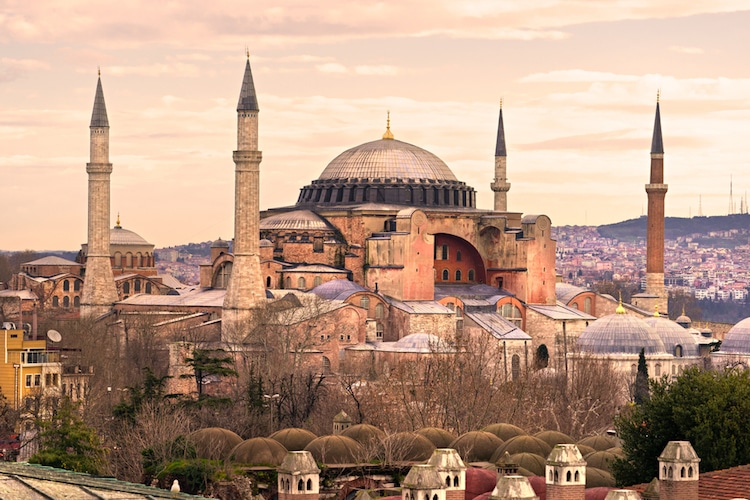
Hagia Sophia. Istanbul, Turkey. (Photo: Luciano Mortula – LGM / Shutterstock)
Byzantine architecture took shape once Constantine moved the capital of the Roman Empire to Constantinople (now Istanbul) in 330 AD. While drawing on elements of ancient Roman architecture, the architectural style evolved. Churches were built with a Greek cross plan and brick and mortar were used to create elaborate geometric patterns as decoration. Architects took more liberty with the classical orders that had been defined since the Greeks. Though Byzantium has a long history, most of the iconic architecture comes from the middle period when the empire was at its wealthiest.
Early works, like the Mausoleum of Galla Placidia, demonstrate the detailed mosaic decoration that would become the hallmark of the style. As the most iconic example of Byzantine architecture, the Hagia Sophia shows off the engineering prowess of the Byzantines with its series of domes—the minarets are an Ottoman addition not part of the original design. In fact, it remained the world’s largest cathedral until 1520. Long after the fall of Byzantium, cultures were influenced by its architecture. For instance, St. Basil’s Cathedral in Moscow, which was started in 1555, mixes Byzantine architecture with Russian tradition.
Timeline: 527 to 1453
Signature building: Hagia Sophia

Mausoleum of Galla Placidia. Ravenna, Italy. (Photo: vvoe / Shutterstock)

Hosios Loukas Monastery. Distomo, Greece. (Photo: Anastasios71 / Shutterstock)
Mesoamerican Architecture
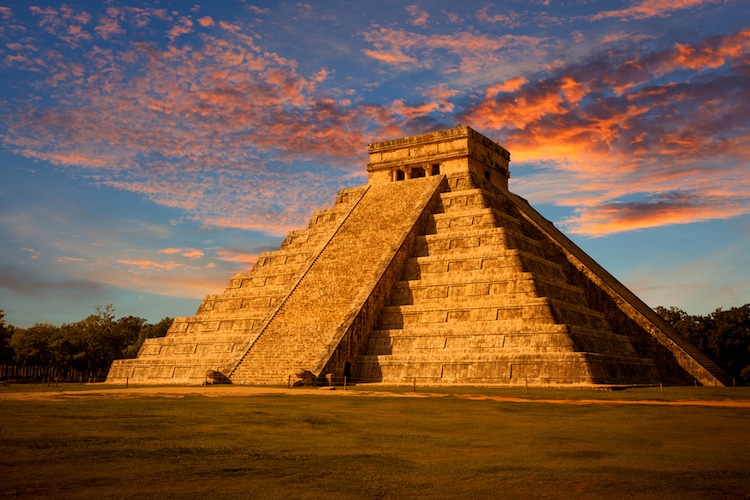
El Castillo (Temple of Kukulcan) at the Chichen Itza archeological site. Yucatán, Mexico. (Photo: Jose Ignacio Soto / Shutterstock)
Mesoamerican—or Pre-Columbian—architecture refers to the buildings constructed by the native cultures of what is now Central America, from central Mexico to northern Costa Rica. The period is most classically identified with Maya architecture and the great stepped pyramids of this civilization. Urban planning was guided by religious and mythological beliefs, as the cultures believed that the architecture was a tangible form of their faith.
Mesoamerican structures are noted for their heavy stonework and use of enormous manpower to overcome technological handicaps. While this limited their abilities to build things such as true arches, they adapted to invent a corbeled arch which supported less weight but was still functional. The El Castillo pyramid at the iconic Maya city of Chichen Itza exemplifies what we think of as Pre-Columbian architecture. The chunky architecture would later influence Frank Lloyd Wright, who in the 1920s and 1930s worked in a Mayan Revival style.
Timeline: 2000 BC to 1519 AD
Signature building: El Castillo (Temple of Kukulcan)

Palenque archaeological site. Chiapas, Mexico. (Photo: Anton_Ivanov / Shutterstock)
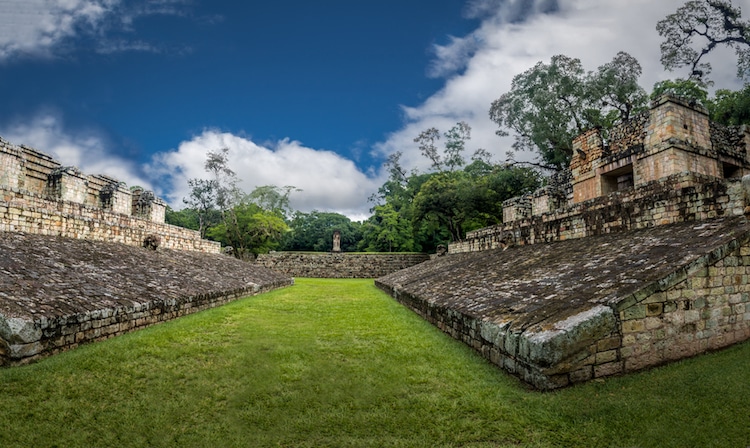
Ball Court at Copán Archaeological Site. Copán, Honduras. (Photo: Diego Grandi / Shutterstock)
Gothic Architecture
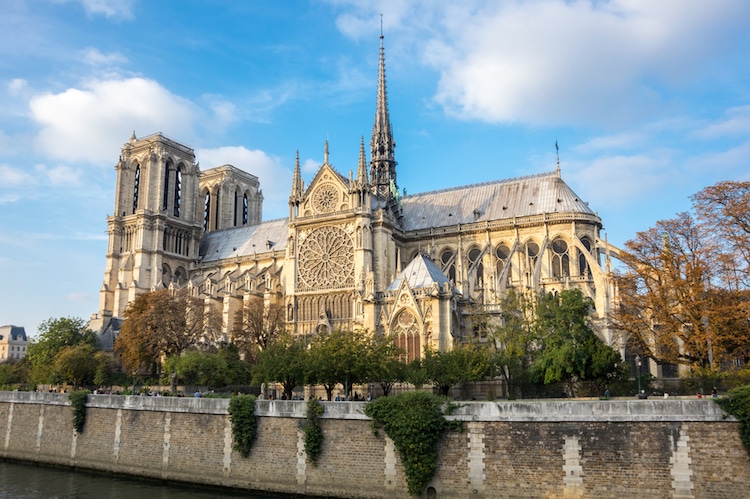
Notre-Dame. Paris, France. (Photo: gumbao / Shutterstock)
The style of some of the best-known churches in Europe, Gothic architecture dominated for hundreds of years, starting in France and spreading throughout the continent. The combination of the pointed arch, flying buttress, and ribbed vault allowed for exceptional verticality to Gothic structures. Increasing the height and reducing the weight of the walls allowed for light to pour in through stained glass windows.
Notre-Dame in Paris is not the first example of French Gothic architecture, but is surely the most famous. In Italy, the main cathedral of Milan shows how other cultures put their own spin on Gothic, exaggerating the flamboyant features with its ornate facade.
Timeline: 1150 to c. 1530
Signature building: Notre Dame

Milan Cathedral. Milan, Italy. (Photo: Boris Stroujko / Shutterstock)

Westminster Abbey. London, England. (Photo: Felix Lipov / Shutterstock)











































































